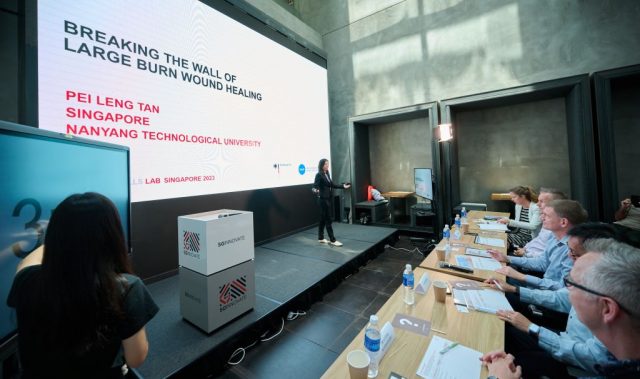
AsianScientist (Dec. 24, 2015) – Researchers at Singapore’s Nanyang Technological University have developed a new algorithm that can analyze energy consumption by tapping on sensors in computer chips.
The technology works in computer chips already used in many appliance and machines such as computers, servers, air conditioning systems and industrial machinery to measure temperature, log data traffic and monitor the workload of computer processors and other functions.
The new technology could help companies and factories cut their energy bills by as much as 10 percent. By combining the algorithm with externally-placed sensors, such as those that monitor ambient temperature, the new technology can integrate and analyse all the operational data and recommend energy-saving solutions with almost no upfront cost.
The technology was developed by Assistant Professor Wen Yonggang from NTU’s School of Computer Engineering, and has been licensed by an NTU-incubated company, Evercomm Singapore.
In a typical semi-conductor factory which produces computer chips and components for computers and mobile devices, the annual electricity bill could easily reach S$50 million (~US$35.6 million) and more. In Taiwan, Evercomm is engaged by National Dong Hwa University and Chunghwa Telecom to deploy their energy analytic engine across the entire university campus.
“With NTU’s new analytic engine, such large semi-conductor factories and campuses could save up to S$1 million a year without a need to change much of their hardware, and instead, tune their operation and time their energy usage,” said Mr. Ted Chen, co-founder and product architect of Evercomm Singapore, who worked with Wen to commercialize this technology.
“The new algorithm allows us to use the most cost-effective way to find out where we can save energy, and our performance can be guaranteed by using real-time data,” added Chen.
Chen said the technology would help him determine exactly how much cooling a room needs and whether there was an oversupply of cooling. Chen also believed it would help Singapore companies meet the regulations set by the Building and Construction Authority for its Green Mark Scheme, allowing them to reduce their carbon footprint and energy usage, added Chen.
Evercomm is looking to expand its expertise into data center industry. It has successful deployed a pilot test at the NTU Green Datacenter, saving five percent of its monthly electricity bill.
In a datacenter consisting of hundreds of computer servers, over half of the energy costs are spent on cooling these servers through air-conditioning.
“Our next challenge is to look into how we can deploy our energy saving analytics for the heartlands—into Housing Development Board flats and housing estates—in partnership with international urbanisation consultant Surbana,” said Chen.
———
Source: Nanyang Technological University.
Disclaimer: This article does not necessarily reflect the views of AsianScientist or its staff.












